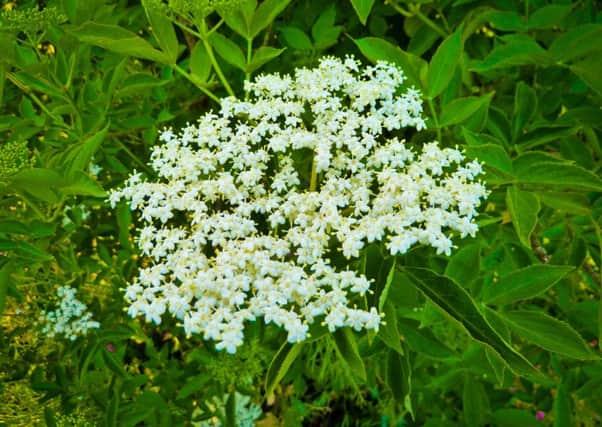The best things in life are free and the countryside offers a bounty of pickings


Seamus Heaney in his poem Glanmore Sonnets refers to the elder as the boortree bush: “It was our bower as children, a greenish, dank and snapping memory as I get older. I love its blooms like saucers brimmed with meal.”
I was in the Lazio region in the south of Italy last week and their landscape is similarly littered with the floral bushes. There the bush is known as Sambuca.
Advertisement
Hide AdAdvertisement
Hide AdWhen I worked in MacDuff’s restaurant in Aghadowey in the early eighties, drinking Sambuca was the big thing. A shot glass was filled, three coffee beans added to represent health, wealth and happiness and the top was set alight. The lights would have been turned off temporarily to show off the violet flames and heighten the drama. Nowadays a risk assessment and health and safety measures would put paid to this theatricality. Sambuca is made from the dark as night elderberries that appear around the end of September but the focus now should be on preserving the flowers.
Elderflower cordial is the simplest way of capturing the essence. Dissolve 450g of sugar in a litre of boiling water. Add two lemons sliced thinly and 25g citric acid. Add about 15 washed heads of elderflower, cover and leave for 24 hours. Strain through muslin and bottle.
To pep it up a bit I add a tablespoon of hibiscus flowers to the boiling water, to give the finished cordial a warm pink glow or add the petals from two fragrant roses. A word of warning though, when you’ve opened the cordial, drink it within a few days. I made the mistake of leaving it in my drink’s cabinet and the resulting fermentation caused a mini explosion with the door to flying open and spraying the walls with sticky liquid.
The flat wild garlic leaves that scented the air beside rivers and sheughs are gone now and their delicate white flowers have given way to green buds.
Advertisement
Hide AdAdvertisement
Hide AdThese buds can be washed, pulled off the stem with a fork, pickled in vinegar and stored in sterilized jars for the winter months. Three or four buds will flavour a dish with a deep, zingy garlic aroma and they cost nothing. Elderflowers can be stored in vinegar too.
Simply wash and dry and cover with vinegar in a jar or bottle. After a few days there’ll be enough flavour in the jar to use the elixir. My first recipe uses it in a dressing with butter.
The butter is melted until nutty – the French call this beurre noisette. It’s then combined with the elderflower vinegar, mustard and Broighter gold rapeseed oil. It’s perfect with oily fish or grilled pork or chicken.
The other recipe this week is also inspired by seven days in luscious Italian sunshine. Sitting on a terrace, having dinner in full view of an apricot tree reminded me of the understated power of this succulent and fragrant fruit. The fruit was green and hard, not ripe for another month but an elderflower bush growing beside it filled the evening air. Apricots and elder work beautifully together and I’ve included a recipe using this combination plus the addition of a sparkling Prosecco jelly and mascarpone cream. Rhubarb would work equally well but the apricots are available here at the moment and provide a touch of Mediterranean sunshine. Italian flavours with elderflowers from here – the perfect summer pudding.